A-6 Intruder: The Iron Tadpole
September 2nd, 2023
7 minute read
The Grumman A-6 Intruder first flew in April of 1960. It was declared operational three years later. This ugly subsonic strike aircraft soldiered on for another 34 years, fighting in every major engagement in which American forces were involved. Versatile, rugged, reliable, and mean, the Intruder was a workhorse in Cold War Naval Aviation.
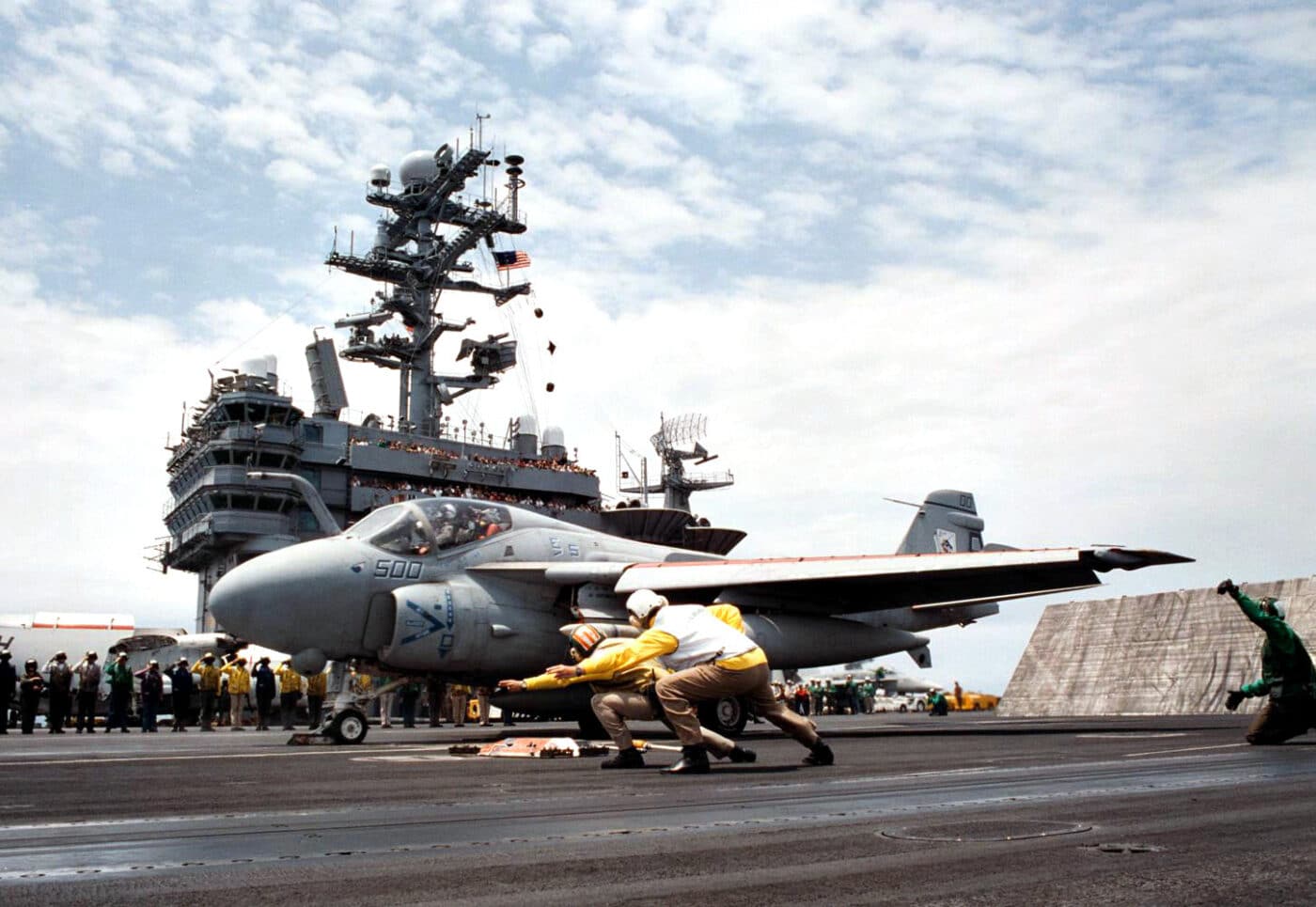
The Intruder was originally intended as a replacement for the piston-driven A-1 Skyraider. However, the old, slow WWII-vintage Skyraider proved to be such a robust and versatile attack platform that the two aircraft served side-by-side throughout the war in Vietnam. Aircrews affectionately referred to the A-6 as the “Double Ugly”, the “Drumstick”, the “Mighty Alpha Six”, and the “Iron Tadpole.” The A-6 was the big stick for American carrier battle groups.
A Tidy Little Slaughter
Resident Libyan lunatic Muammar Gaddafi was always more than a little bit crazy. A classic old school despot, Gaddafi stirred up trouble around the globe. He was quick to provide arms and money to any sawed-off half-baked terrorist group who could figure out how to mail him a letter asking for it. By 1986, President Ronald Reagan had had about enough.
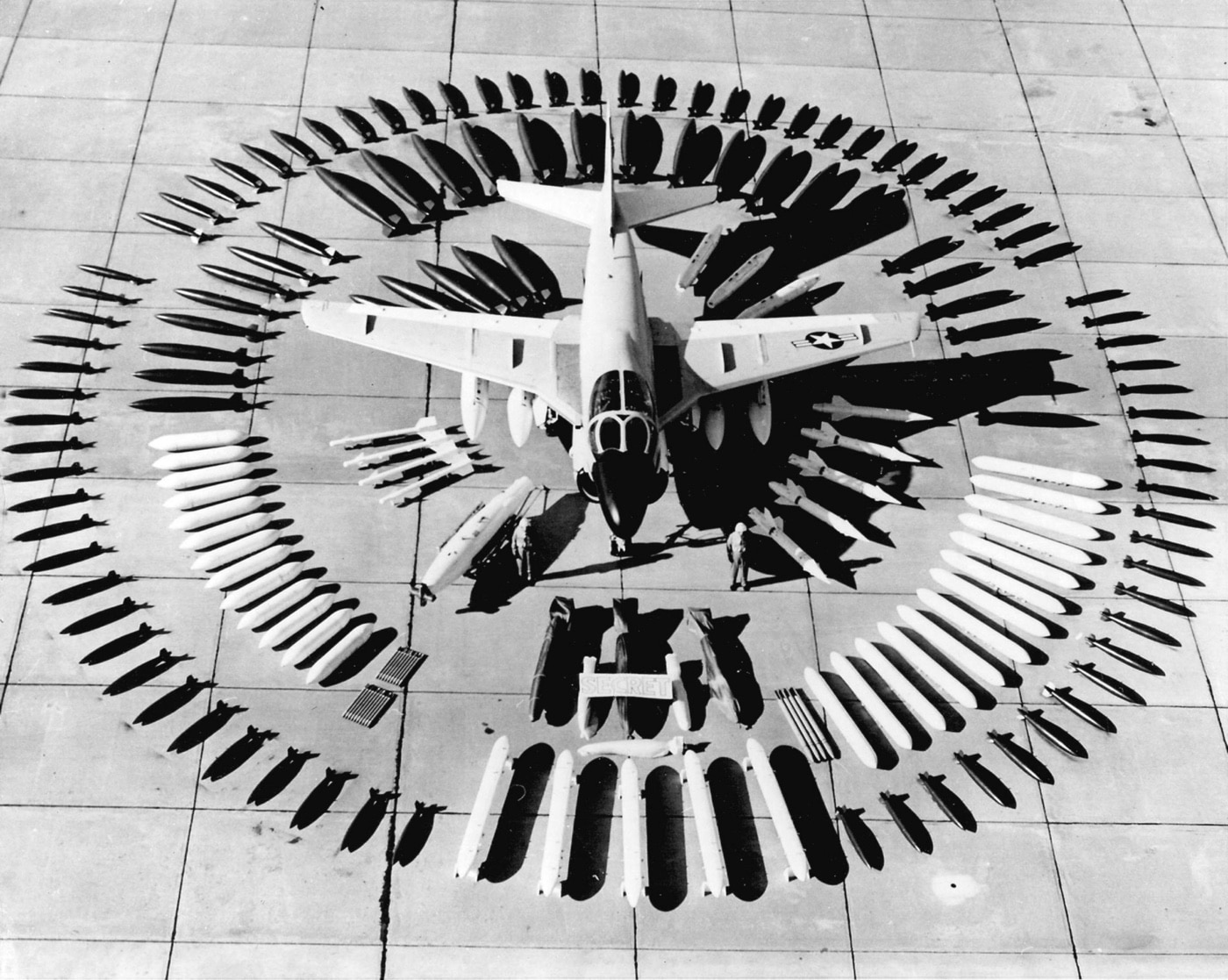
What kicked off this party was essentially a territorial dispute. Every sensible country on the planet acknowledges that a nation’s sovereign territorial waters begin 12 miles off shore. I have no idea who first decided that, but, really, practically everybody agrees to it these days. That’s everybody except Libya in those days.
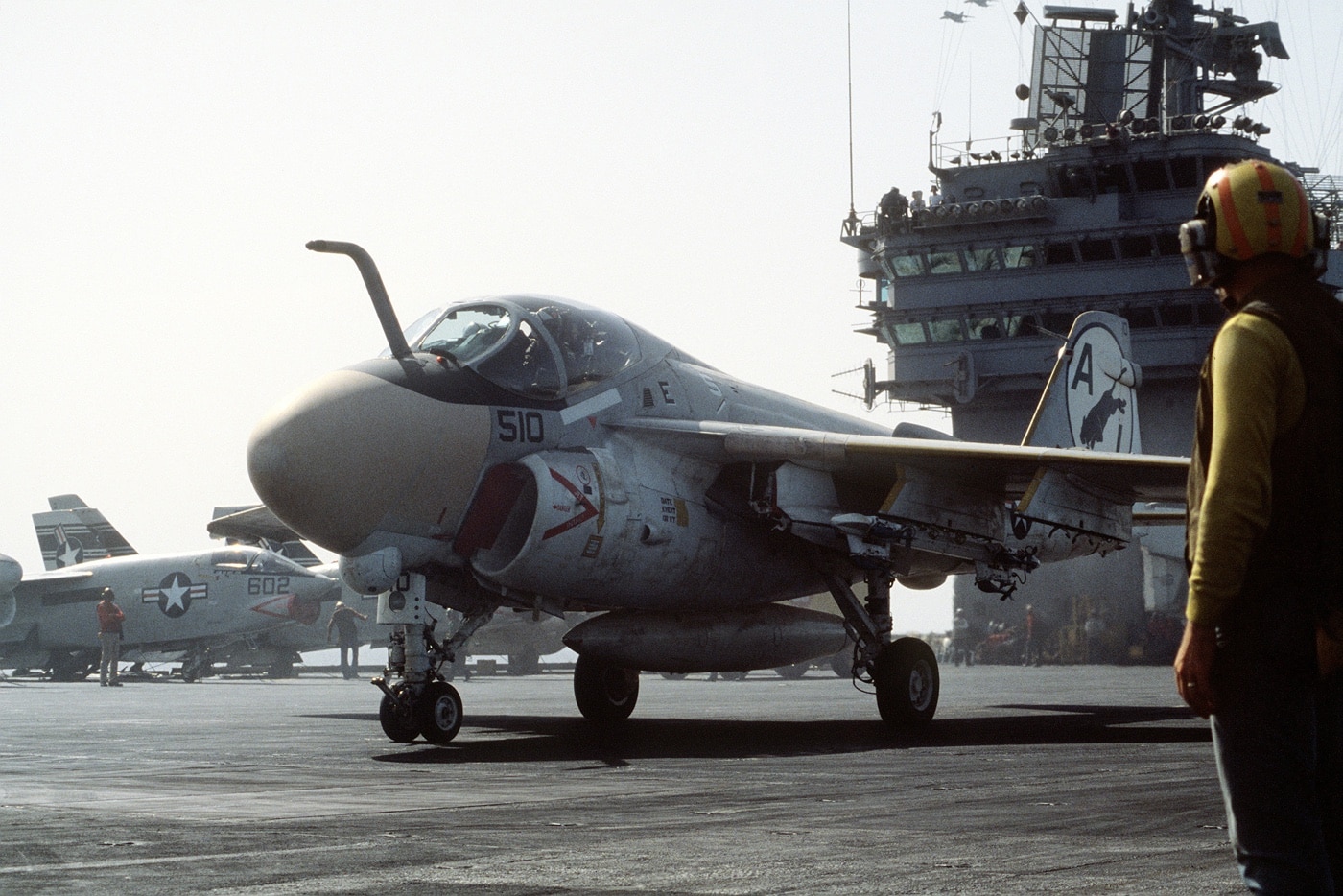
Gaddafi determined that Libya’s territorial waters should include the Gulf of Sidra extending out some 62 miles into the Mediterranean Sea. He also emplaced a thicket of surface to air missiles around the Gulf and declared his 62-mile demarcation to be the “Line of Death.” In addition, he had quietly begun exploiting the rich uranium reserves in nearby Chad. Nobody wanted that nutjob to acquire nukes. By February 1986, Reagan was ready to call his bluff.
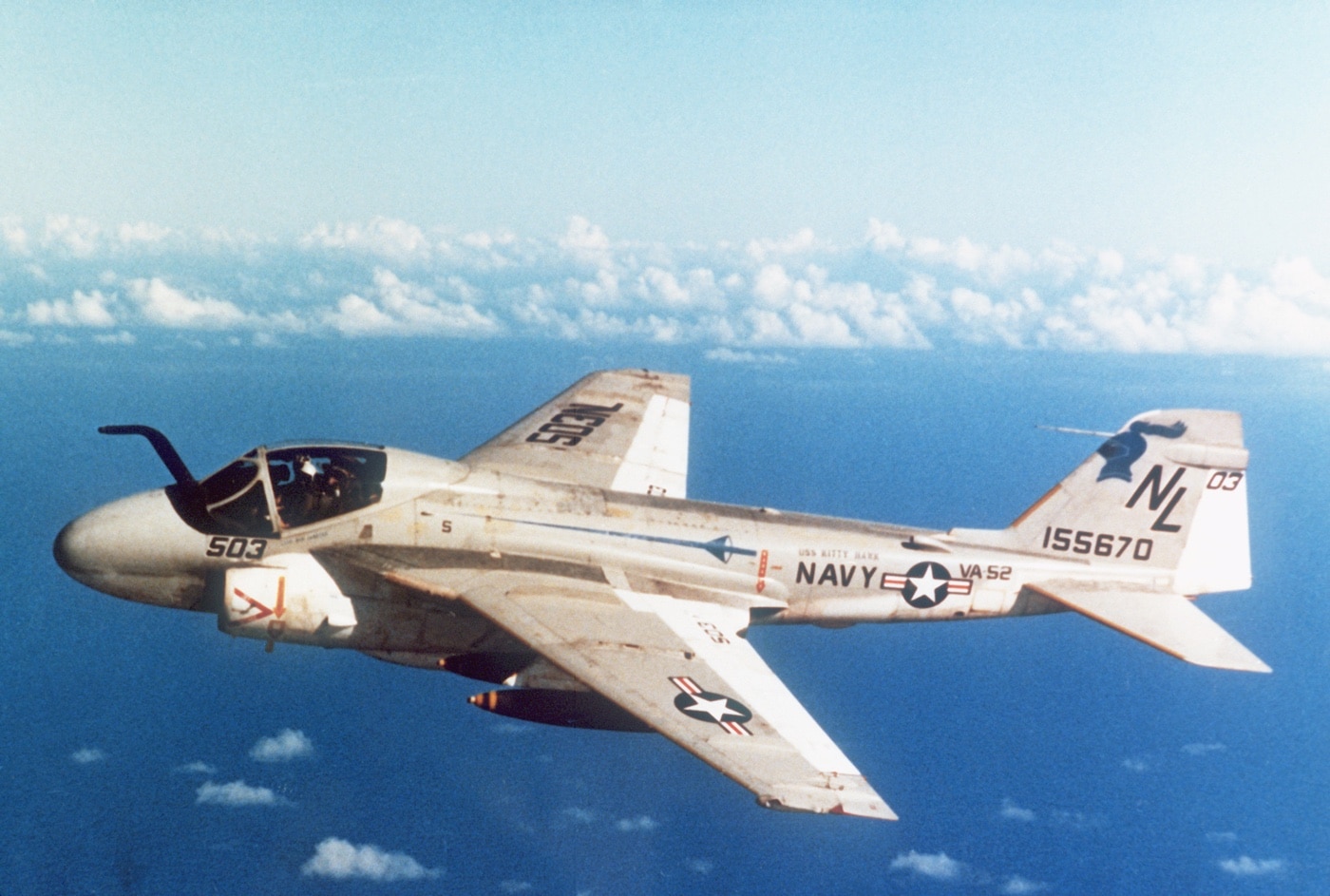
After high-profile Libyan-sponsored terror attacks in Rome and Vienna, the U.S. Navy began a series of aggressive “Freedom of Navigation” operations wherein naval task forces sailed through the Gulf of Sidra while remaining outside the 12-mile line. The Navy christened this effort “Operation Attain Document”. I can only presume that all the cool military operation names had already been taken. Attain Document was a subset of the overarching Operation Prairie Fire, which was obviously a bit cooler.
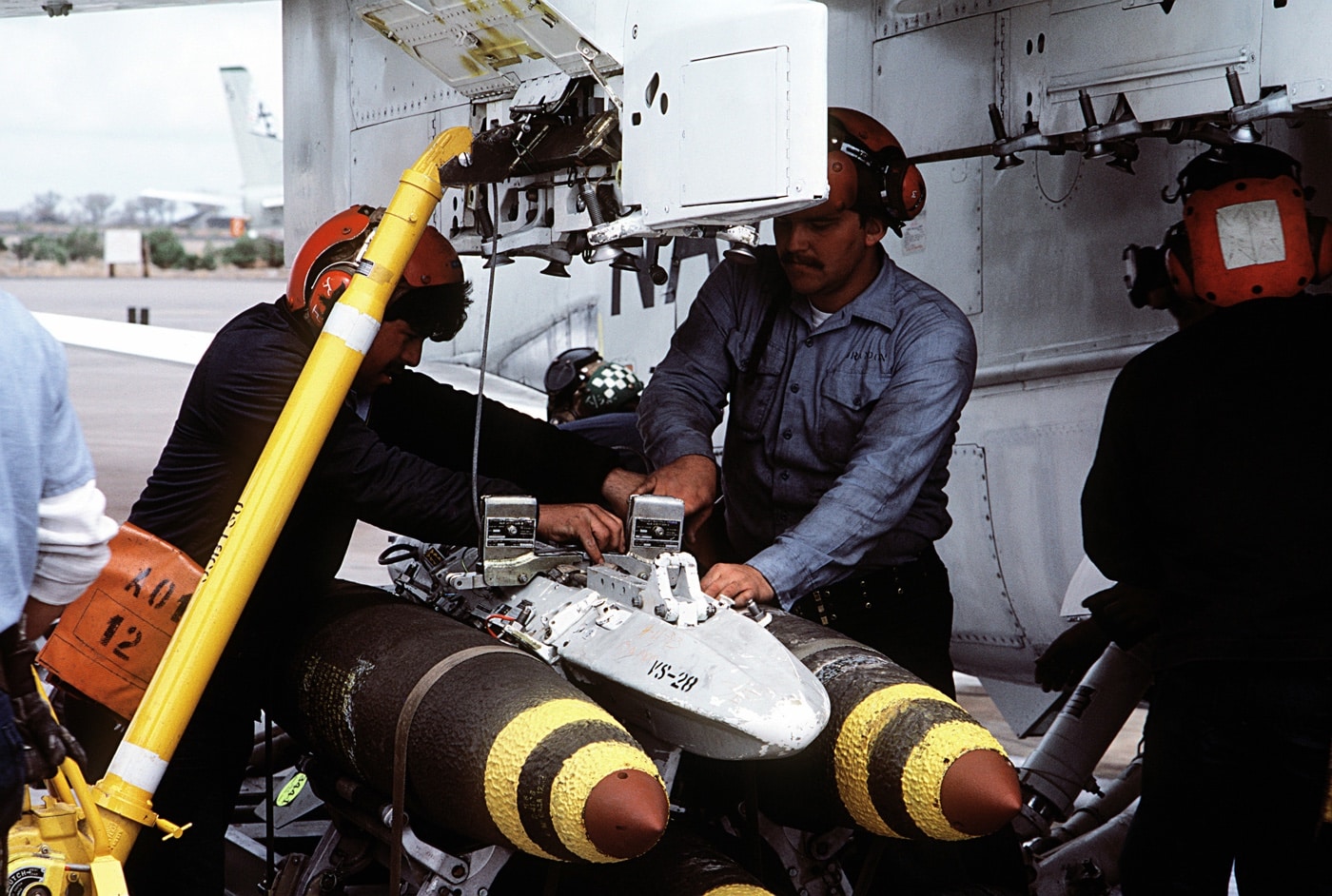
Never one to do things halfway, the Gipper staged three aircraft carriers, five cruisers, twelve destroyers, six frigates, 250 combat aircraft, and some 27,000 service personnel. These guys came ready to play.
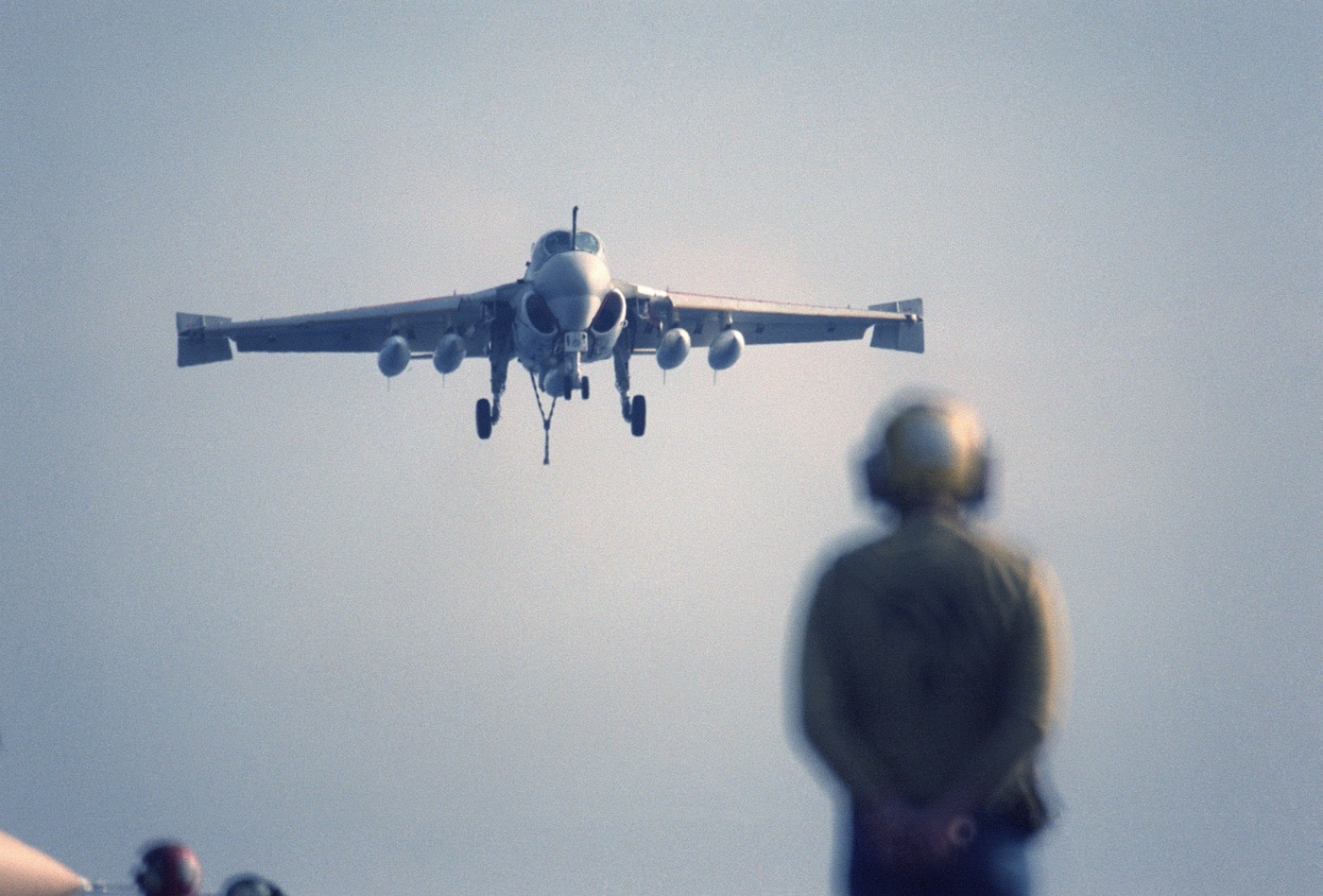
The American task force led with fighter aircraft that were promptly fired upon by Libyan SAM’s. The F-14 Tomcats evaded the missiles with the assistance of EA-6B Prowler electronic warfare aircraft. There was also a fairly epic cold dogfight between a pair of American F-14’s and a brace of Libyan MiG-25’s that ended with the MiGs running for home without any weapons being released by either side. Then a Libyan patrol boat lit up American strike aircraft with its fire control radar and earned a ship-launched RGM-84 Harpoon antiship missile for its trouble. The fuse was lit.
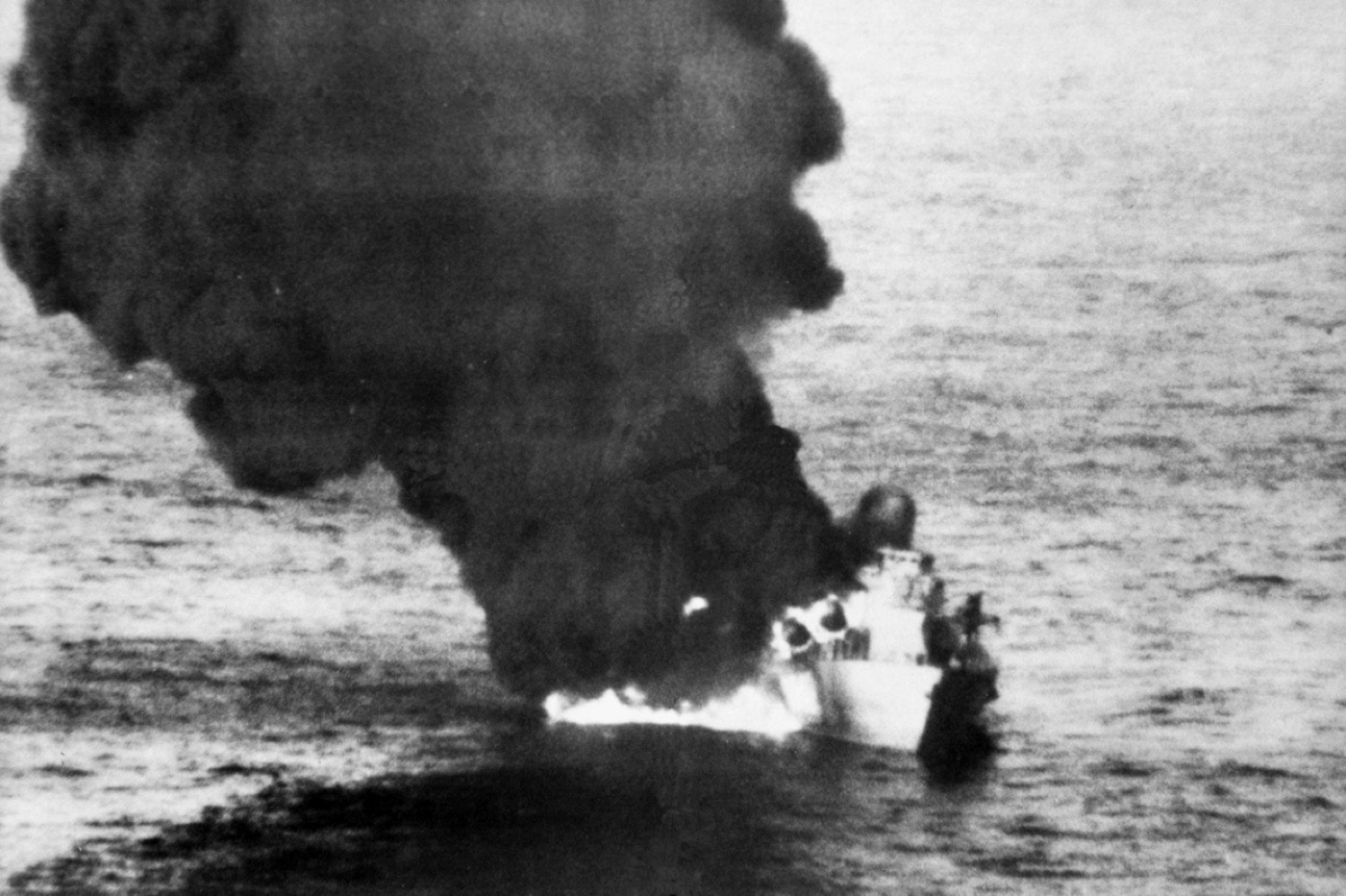
The Libyan attack boat was disabled and set ablaze, but not sunk. Now that shots had been fired, the naval air assets went to work. A pair of A-6E Intruders from VA-34 on the USS America made contact with the French-built La Combattante IIa-class Libyan patrol boat Waheed. One of the Intruders centerpunched the Waheed with a Harpoon missile, leaving it dead in the water. A subsequent strike package of A-6’s from VA-85 launched off of the USS Coral Sea then pulverized the stricken ship with Rockeye CBU cluster bombs. The sinking of the Waheed by A-6 Intruders represented the first operational aerial deployment of the Harpoon antiship missile.
By the time the dust settled, American forces had sunk a Libyan corvette and a patrol boat and destroyed a variety of terrestrial SAM sites. They also disabled another corvette and a further patrol boat while killing 72 Libyans and wounding half a dozen Russian advisors. No Americans were hurt, and no U.S. assets were lost.
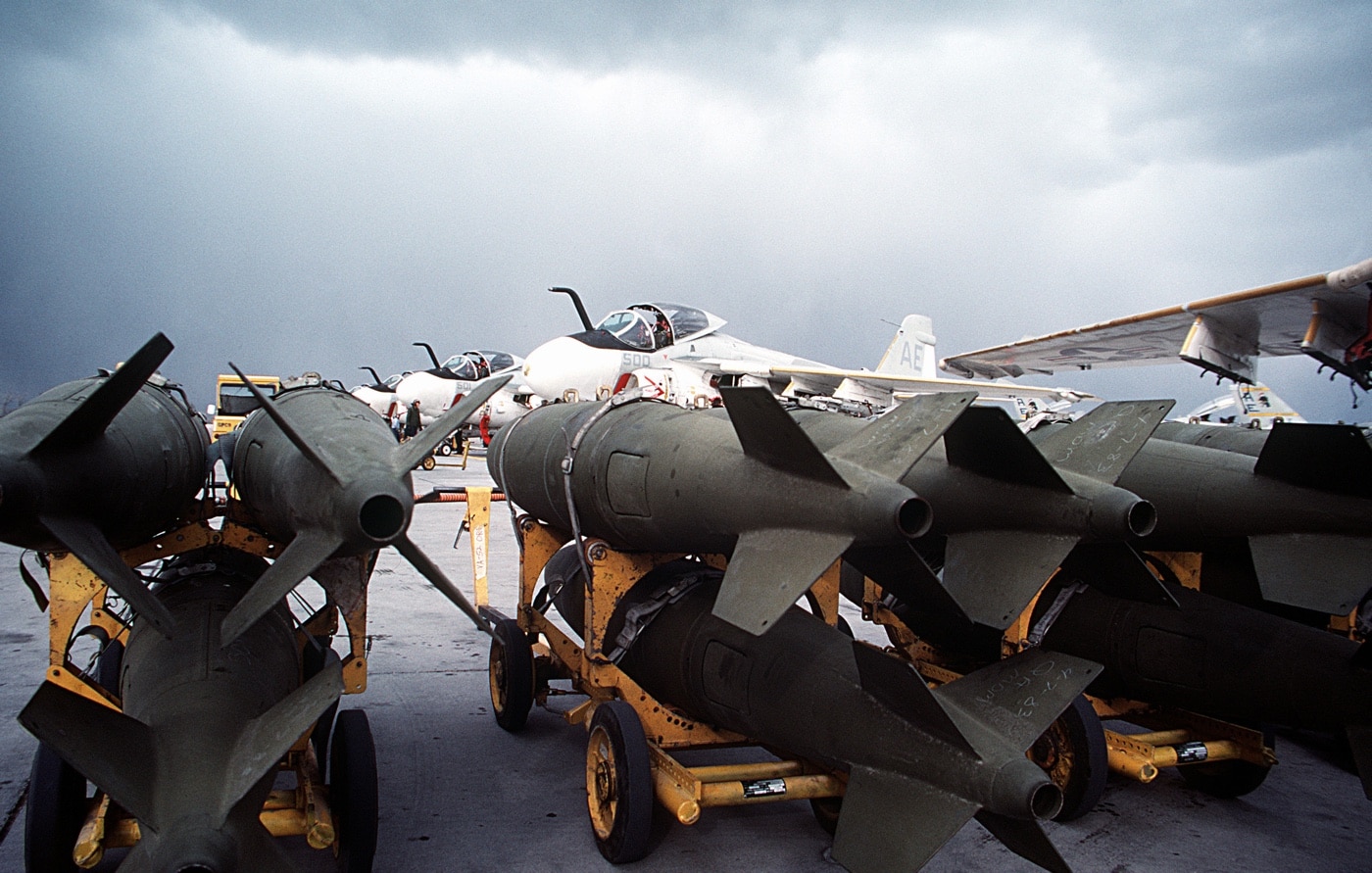
This profoundly one-sided engagement laid the groundwork for Operation El Dorado Canyon three weeks later. El Dorado Canyon was the sweeping air attack that destroyed targets across Libya and was actually quite effective in getting Gaddafi to mind his manners for several decades to come. Throughout it all, the A-6 Intruder played an outsized role.
The Plane
The requirement for the A-6 was issued in 1957. The Intruder was to be an all-weather day-or-night strike aircraft. The resulting aircraft featured a two-man crew of a pilot and a Bombardier/Navigator (BN). The two crewmen sat side-by-side, with the BN very slightly behind and below the pilot to ensure good visibility all around for carrier operations.
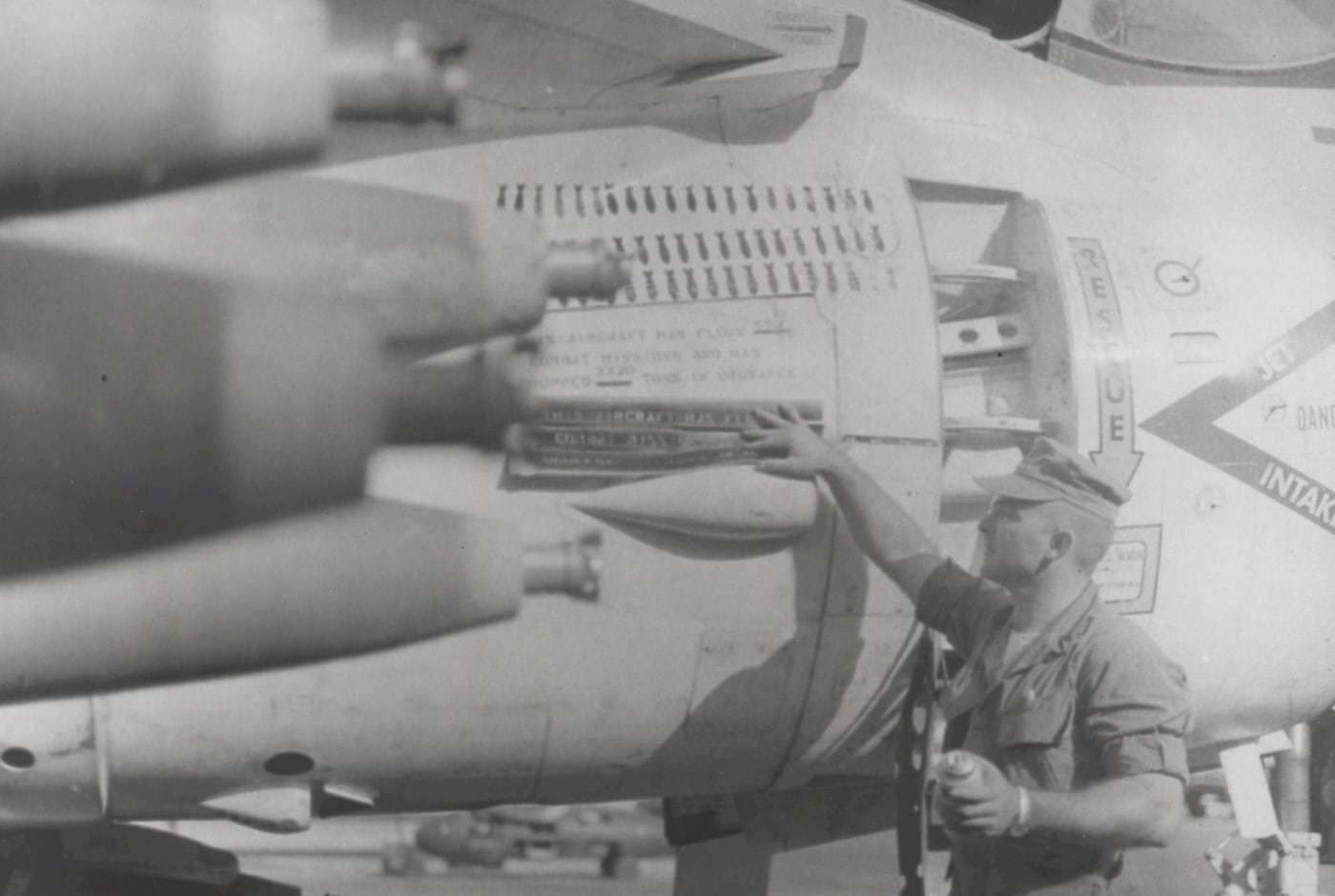
The A-6 was radical for its day by its inclusion of rudimentary computers to assist in ordnance delivery. Grumman’s experience with airborne computer guidance on the A-6 helped the company secure the contract to build the Lunar Excursion Module that later took astronauts to the moon. The Intruder was actually the world’s first true all-weather attack aircraft.
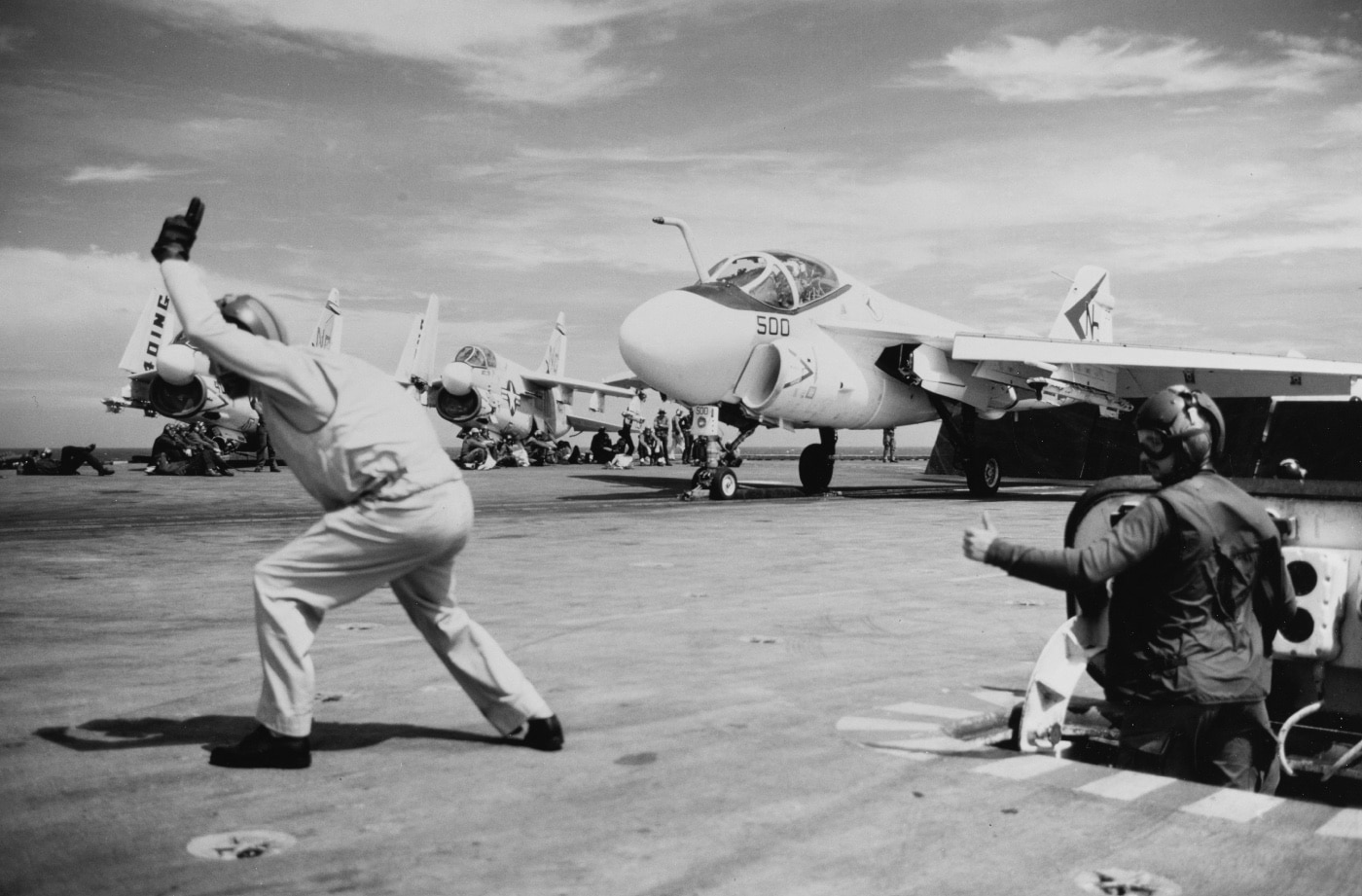
A subsequent variant, the EA-6B Prowler, was a dedicated electronic warfare version of the plane. The Prowler was a stretched version of the Intruder crewed by a pilot and three Electronic Countermeasures Officers.
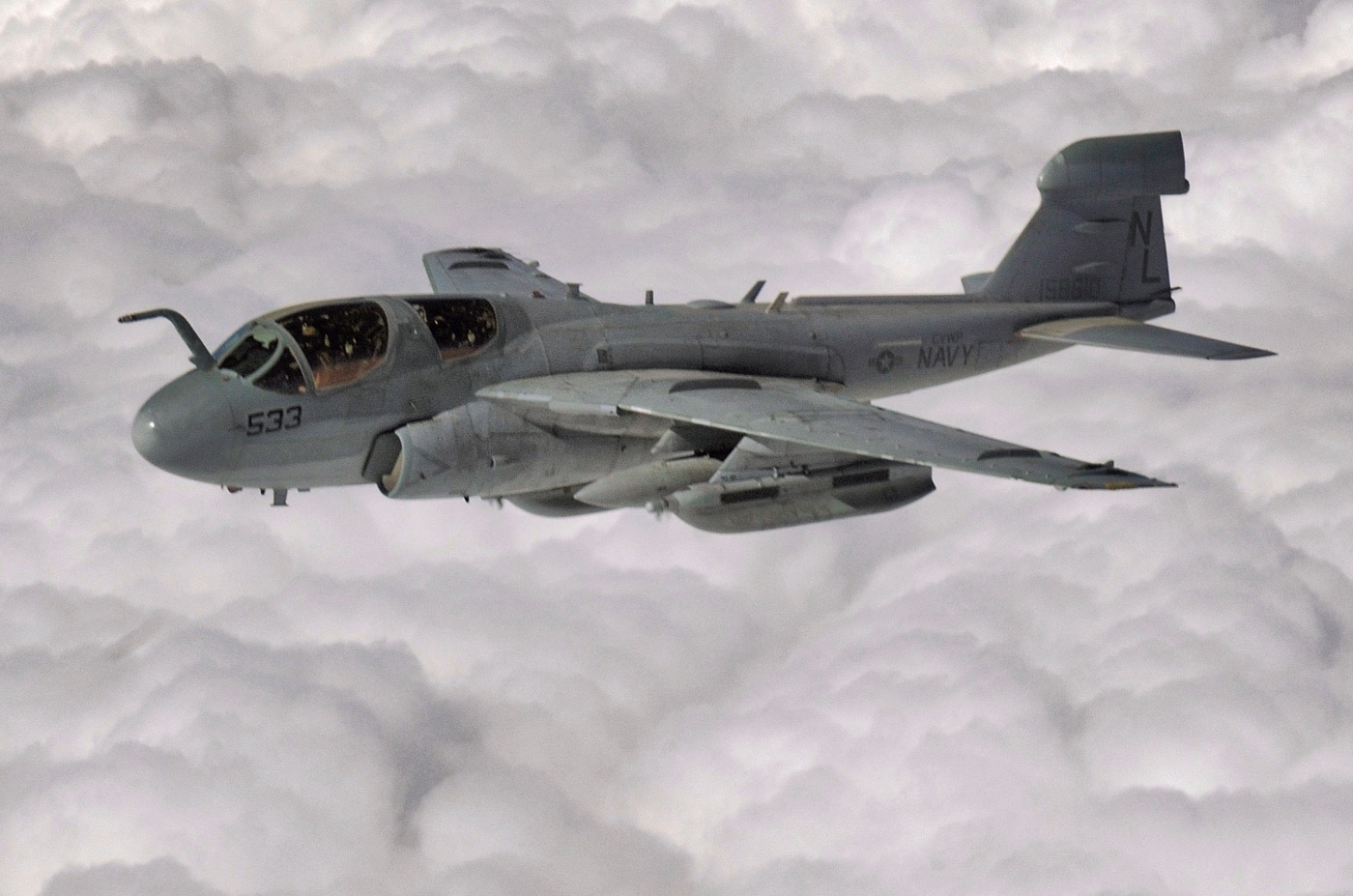
The primary weapon deployed by the Prowler was the AGM-88 HARM (High-speed Anti-Radiation Missile). The HARM was based upon the Sparrow radar-guided air-to-air missile chassis and was designed to track in on SAM radars and take them out autonomously. All of the Intruder’s ordnance was carried externally on hardpoints.
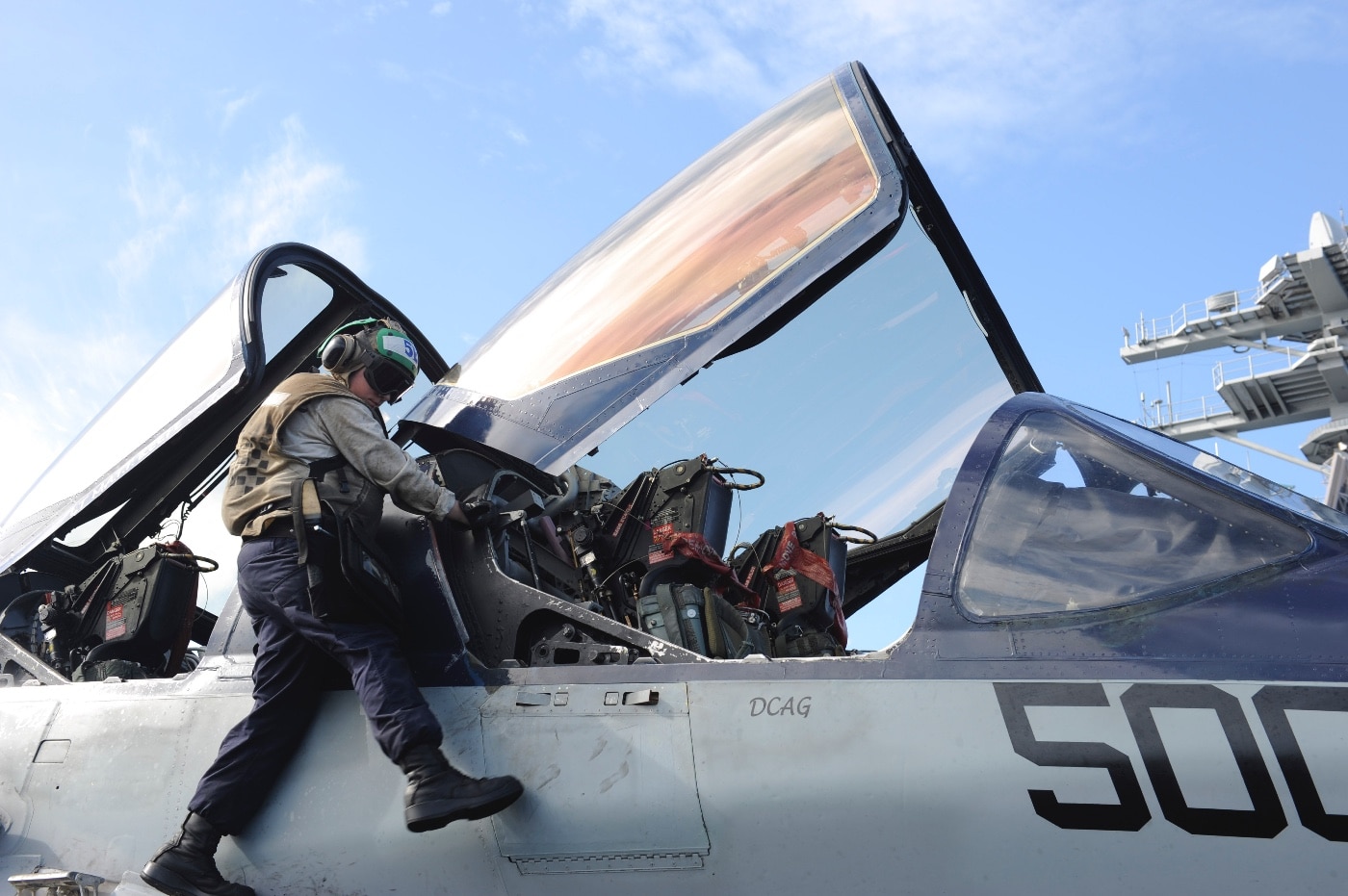
The plane also had a nuclear mission. The attack profile had the aircraft approaching the target at high speed and low level before tossing the nuke at a high angle using a semi-autonomous system that ideally allowed time and space for a safe egress. Thank goodness we never had to test that out for real.
Technical Specifications — A-6E Intruder
| Crew | Two — pilot and bombardier/navigator |
| Length | 54.5′ |
| Wingspan | 53′ |
| Maximum Takeoff Weight | 60,400 lbs |
| Powerplant | 2x Pratt & Whitney J520P8B Turbojets |
| Max Speed | 560 knots (640 mph) |
| Range | 878 nautical miles at maximum payload |
| Armament | Five hard points with a capacity of 3,600 lbs each; total max payload of 18,000 lbs |
Operational History
The Intruder was used throughout the Vietnam War with great success, though 84 Intruders were ultimately lost to all causes during the war. A total of 10 fell to SAMs and two to MiGs. 56 aircraft were shot down by AAA (Anti-Aircraft Artillery).
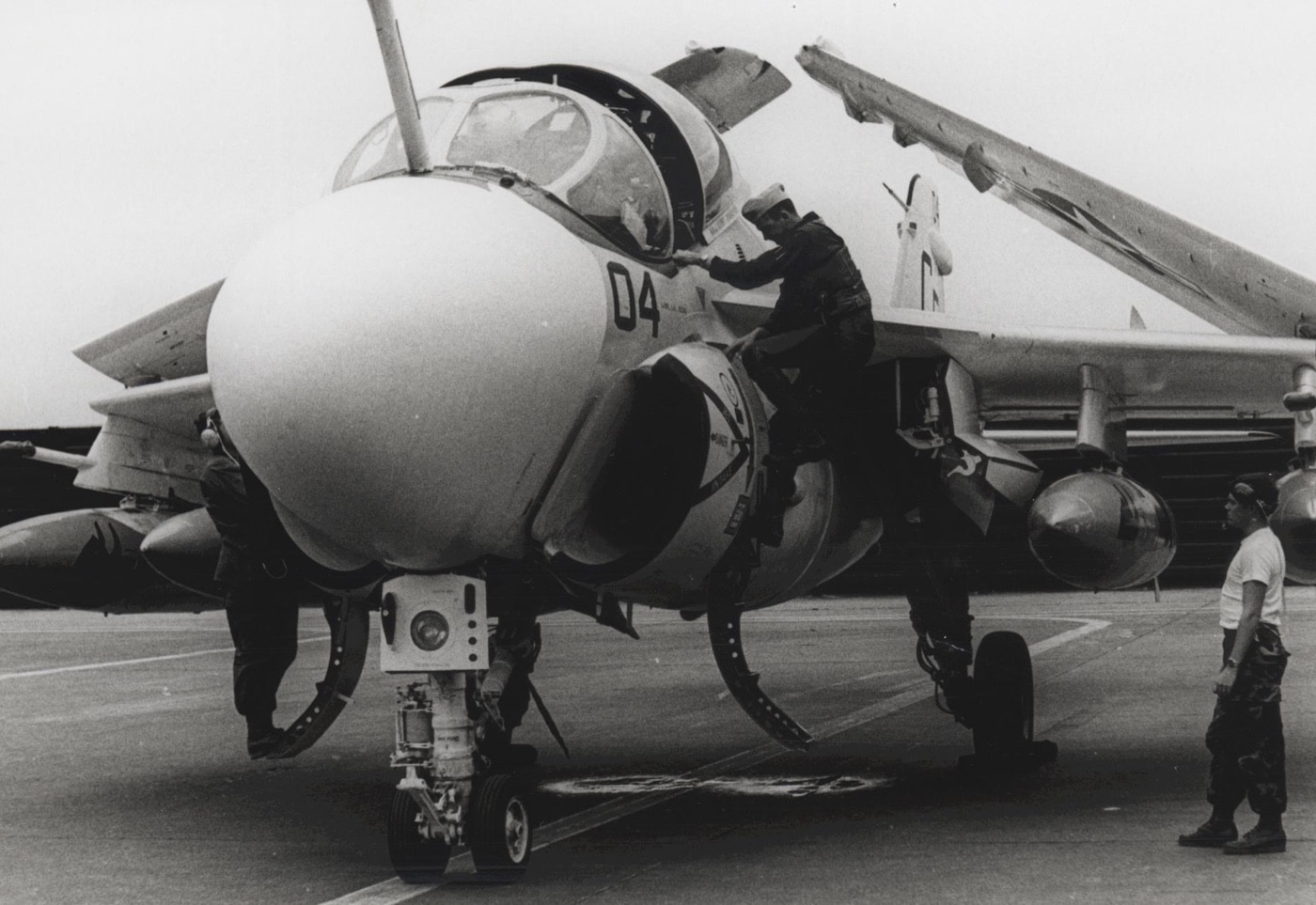
The Intruder saw extensive action in Lebanon, Grenada, the First Gulf War and Bosnia. During Operation Desert Shield/Storm in 1991, A-6 crews flew some 4,700 combat sorties. The Marines retired their Intruders in 1993, while the Navy followed suit in 1997. The A-6 strike mission is currently filled by the F/A-18 Hornet multi-role aircraft.
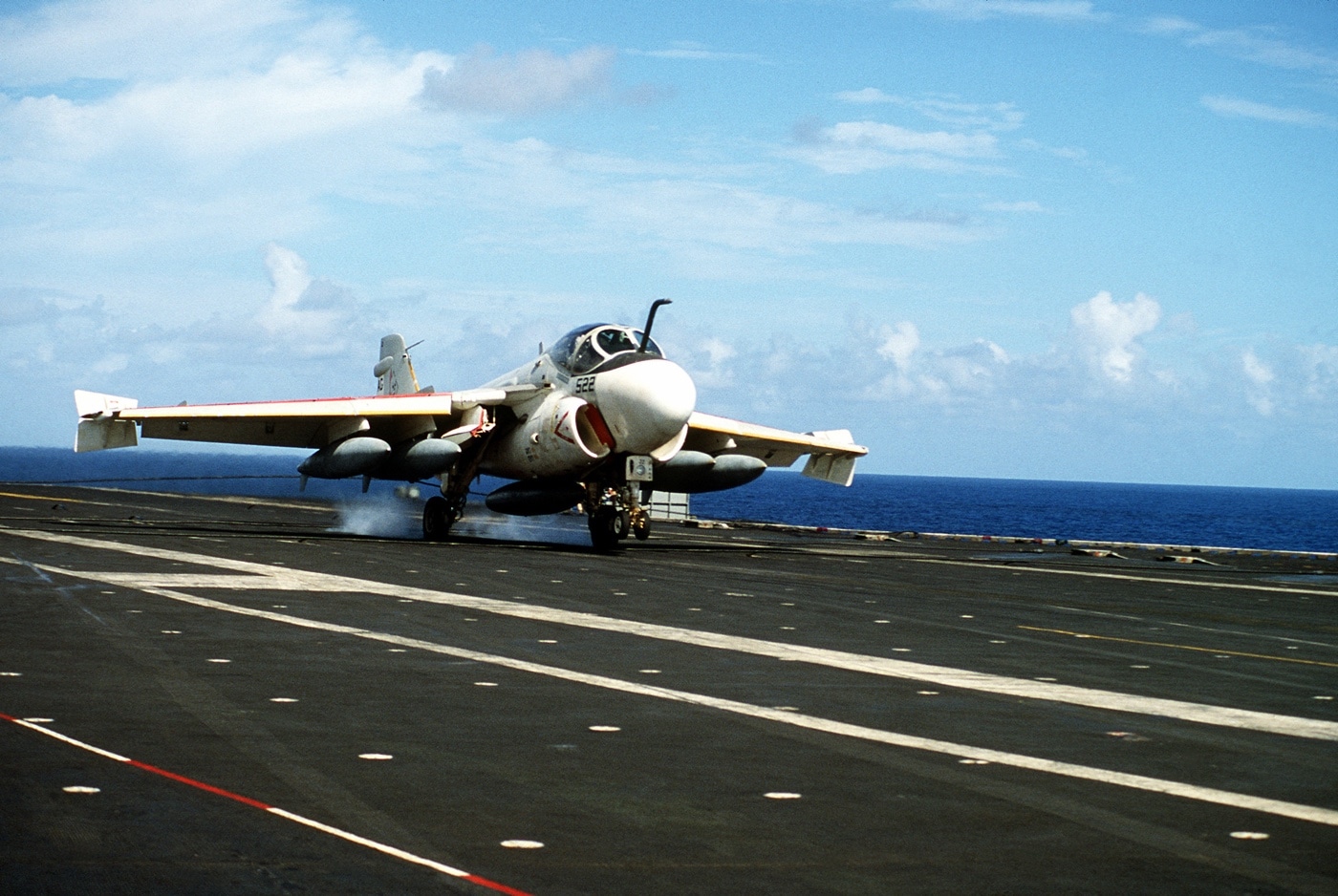
The Intruder was never exported to Allied services. The ugly plane was generally beloved by its crews. The Intruder’s advanced sensor and targeting systems gave it a great deal more flexibility than the strike aircraft that preceded it. The A-6 Intruder was a harbinger of the extraordinary Information Age strike jets currently in action today.
Editor’s Note: Please be sure to check out The Armory Life Forum, where you can comment about our daily articles, as well as just talk guns and gear. Click the “Go To Forum Thread” link below to jump in and discuss this article and much more!
Join the Discussion
Continue Reading
Did you enjoy this article?

 519
519






